Virtual reality (VR) and augmented reality (AR) hold great promise for the future of many industries. Both technologies provide an upgraded experience combining virtual and real worlds with enhanced 3-D images. Although the two can be easily confused, they achieve different goals in different ways. To begin, this article will help you better understand virtual reality and what makes it distinct from other similar technologies. Then, it will delve into how your business should utilize these technologies. Lastly, we will discuss how VR pertains to UX.

What is the Difference Between VR and AR?
VR is immersive, fooling your senses into believing you're in a different place than where you are. You'll enter a computer-generated world of graphics and sounds through a headset. Here, you can manipulate items and move about using intangible controls.
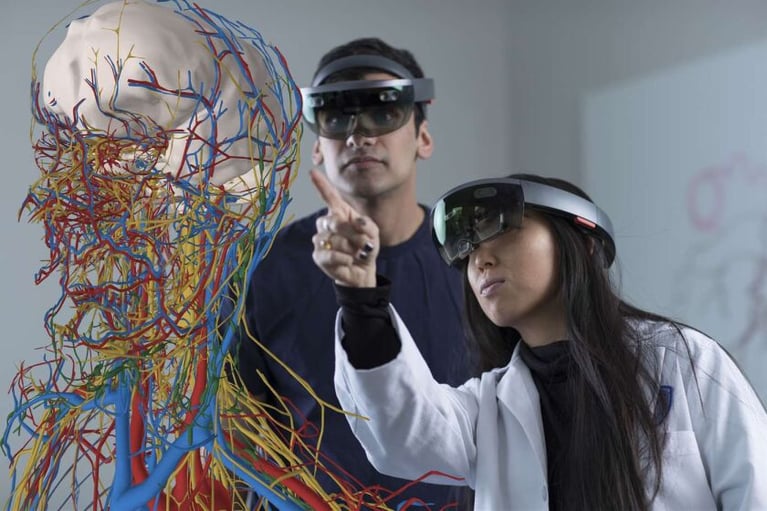
Chronicle
With AR, digital information is superimposed on real-world items. The real world remains important, but augmented reality enriches it with digital elements. AR stacks new layers of perception and complements your reality or environment. This is almost exclusively done through the use of a phone.
When to Use Virtual Reality vs. Augmented Reality in Your Business
As mentioned before, both virtual and augmented reality possess unique advantages and disadvantages. You must understand how to use each effectively and know what tasks best suit each.
Virtual reality lends itself more to navigational endeavors and is great for visualizing landscapes. Industries such as tourism and healthcare can benefit greatly from VR because of its immersive experience. Tourists can visit exotic locations from the comfort of their own homes, and VR can train healthcare workers on difficult tasks without the risks involved with traditional training. With this being said, VR does have a 45-minute limit for how long you can wear a headset. This is because fully immersed in a virtual world can cause motion sickness. There are also issues with VR’s internet speed, leading to a lagging effect while a user is in a virtual world.
AR is best for product visualization. Augmented reality is great for displaying accurate product dimensions via a 3D rendering of a product. Likewise, AR is more effective for products with user manuals because AR technology can guide users with product use in real time. AR also has a better track record regarding internet speed due to its incorporation into phones.
VR and AR Use Cases
Early Stage
Virtual reality and augmented reality have gained broad use in the healthcare industry. VR, in particular, is utilized in therapy to help individuals suffering from phobias and anxiety. Online therapy startups such as BetterHelp have utilized these technologies.
Therapists use biosensors to better understand how patients react to stressful circumstances in a simulated but safe setting. By measuring eye movement, individuals with autism may also utilize VR to help acquire communication and social skills and diagnose those with visual or cognitive problems.
In contrast, AR has been used in the healthcare field primarily as a way of training. A startup named AccuVein uses augmented reality to show nurses and doctors the locations of veins in their patients. This is accomplished using a handheld scanner that projects over the skin. To learn more about this technology, visit this article, where it is explained more thoroughly.
Mature Stage
In March of 2021, the gaming company Roblox went public and was valued at a whopping 38 million dollars in market cap. This was largely due to the company revealing its plans to create a virtual “metaverse.” According to CNBC, a metaverse is where millions of people “can gather to participate in games, meetings, collaborative work and even Roblox’s own virtual economy fueled by its currency called Robux.” Roblox intends to replicate the real world using VR technologies and provide users with an experience that can change how we see gaming.
Snapchat acquired AR startup Cimagine media in 2016 and has not looked back. Cimagine Media specializes in using AR technology to help customers visualize products digitally. To learn more about this acquisition, visit this article, which explains the deal in further detail.
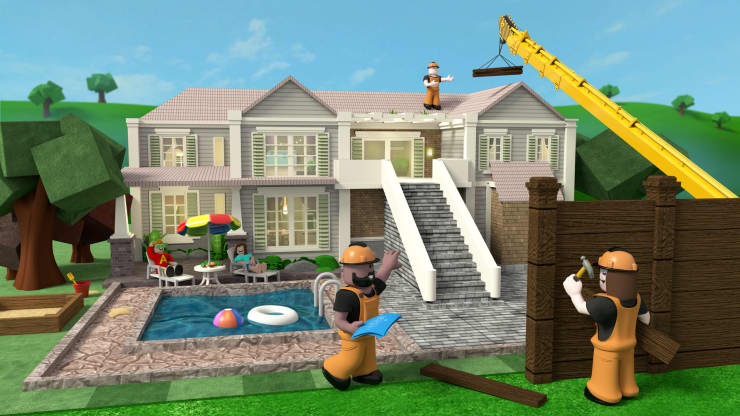
CNBC
Growth Stage
Volvo employed virtual reality technology in 2014 when it partnered with Google Cardboard VR. After releasing one of their new vehicles, Volvo allowed consumers to test drive the vehicle virtually. This was one of the most creative uses of VR applications. It showcased how VR can provide buyers with an up-close view of a product. VR allowed customers to emphasize the vehicle’s most distinctive characteristics while allowing people to fully experience how to use it.
In contrast to VR’s ability to provide an immersive experience, augmented reality has been used to aid in product visualization. Nike has improved their business by putting AR into its app to assist users in measuring their feet and determining their proper shoe size. You can measure your foot at home using the app to correctly determine your size and order shoes confidently that you are ordering the correct product.
Employee Facing
Both AR and VR are incredibly effective in the realm of training. Augmented reality is best suited for training in real time, and VR is best for training before a specific task takes place in the real world. For example, training fighter pilots. The US military has been training pilots using VR for quite some time and has had great success. According to military.com, “The Air Force has seen benefits from having pilots learn basics through cutting-edge virtual reality technology.”
As mentioned before, augmented reality is great for training in real time. AR has proven to be incredibly effective with service technicians. It allows these professionals to be guided through the repair process, and in turn, they can quickly and more accurately execute field repairs.
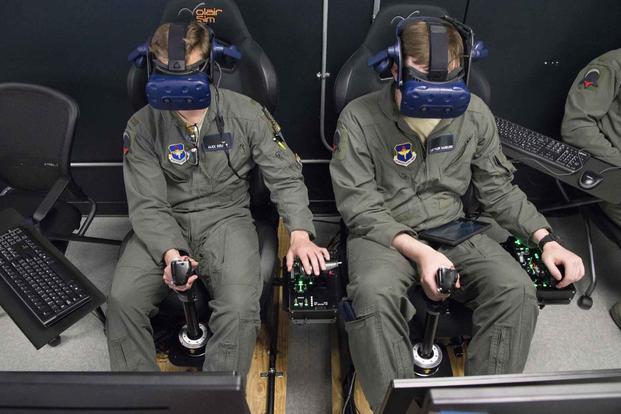
Military.com
Customer Facing
Virtual reality and augmented reality have both been adopted by IKEA to improve their customer’s experiences. IKEA has taken advantage of AR technology and created an app that allows customers to test IKEA’s products in real time through their phones.
Regarding VR, IKEA has built a high-definition, interactive showroom that employs virtual reality's immersive capabilities to provide a unique 3D product experience. Customers can experience IKEA’s pre-designed living room spaces using a headset.
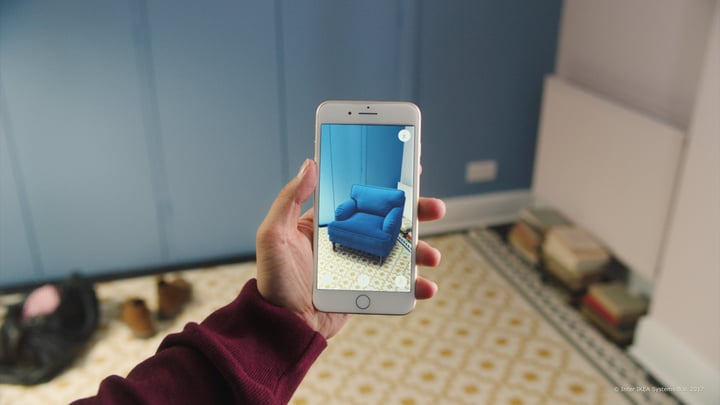
TechCrunch
How VR Relates to UX
Virtual reality immerses a user in your business's product or service. The process of creating a VR experience is similar to that of creating a web or mobile application. You must still figure out who your customers are and how they'll use your product. However, compared to standard mobile apps/websites, the VR experience necessitates greater active user participation in the interaction process. In this sense, VR can enhance a user’s product experience to the extent of a designer’s creativity.
In terms of product visualization, Augmented reality bests virtual reality. AR can provide a more realistic version of a product because it can align the product with a customer’s canonical view. VR is better suited for artistic endeavors such as video games due to its lack of realistic product rendering.
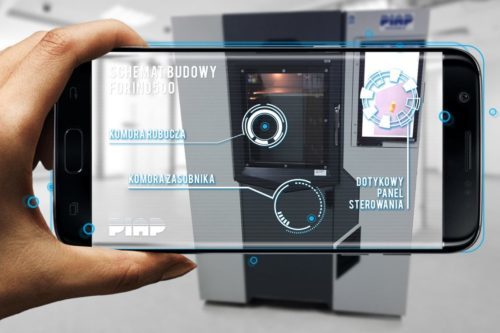
4experience
Navigationally, virtual reality is superior. Virtual reality provides the ability to render landmarks that can be used for training purposes. As mentioned before, fighter pilots have utilized VR heavily. One way they do this is by virtually scouting a mission’s landscape before carrying it out in real life. This helps eliminate the pilot’s tendency to get lost in new landscapes.
Conclusion
Virtual reality and augmented reality are on the cutting edge of technology. Each technology has unique advantages and disadvantages that a business should be aware of. Contact us if you have any further questions regarding VR or AR and how your business can utilize them. We will be more than happy to assist you.
Editor's note: This post was originally published in August 2021 and has been updated for comprehensiveness.